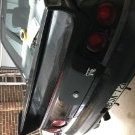catch cans and fitting
Announcements
-
Similar Content
-
Latest Posts
-
If the original NA ECU has a separate TCU then you are going to need to reroute wires that used to run between the trans and the TCU to the appropriate (1 to 1 equivalent) pins on the ECU. Other than that, it should work. Look up posts by @Kinkstaah on the subject.
-
So the stagea was a series 2 neo det with tiptronic auto. (I have the transmission aswell) and has integrated tcu in the ecu. I'm hoping to use the entire stagea ecu, engine and auto harness.
-
By robbo_rb180 · Posted
Does the stagea have the gearbox control in ecu or separate controller? A mate did this conversion and went a r34gtt ecu with Nistune and added a few resistors and diodes to ecu loom to give ecu a few fake signals and gearbox uses factory controller. Old R34 +T thread That setup has worked well but is all being removed for a Link plugin and 8hp50 conversion soon
-







Recommended Posts
Create an account or sign in to comment
You need to be a member in order to leave a comment
Create an account
Sign up for a new account in our community. It's easy!
Register a new accountSign in
Already have an account? Sign in here.
Sign In Now